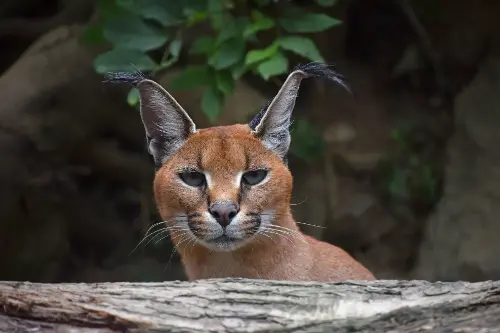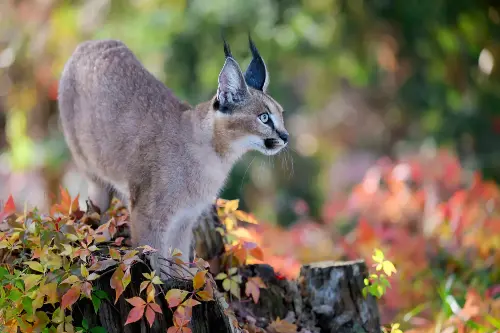In the wild, precision and strategy are critical for survival, especially amongst predators. One such adept hunter is the caracal, a medium-sized wild cat known for its remarkable ability to hunt avian prey. This feline's methods are a marvel of natural adaptation, showcasing an agility and cunning that make it a master in the art of ambush.

Understanding the Caracal
Caracals possess a robust build and are characterised by their distinctive long, tufted black ears. Native to Africa, the Middle East, Central Asia, and India, these agile predators have adapted to a wide variety of habitats, from savannas and forests to arid, semi-desert regions. Despite their varied surroundings, one constant remains: their extraordinary hunting skills.
Anatomy of an Avian Ambush
The caracal's bird hunting technique is one of the most spectacular displays in the animal kingdom. Using their powerful hind legs, they can leap into the air to incredible heights, reaching up to three meters. This allows them to pluck birds right out of the sky, a tactic that requires impeccable timing and accuracy.
Moreover, these cats have keen eyesight, essential for spotting and tracking their winged prey from a distance. Their large, strong paws and sharp retractable claws make for an efficient grasp, ensuring that once targeted, the prey has little chance of escape. But it’s not all about brute strength; caracals also employ stealth, approaching their prey undetected before launching into their airborne assault.
The Hunting Grounds
Caracals are primarily nocturnal hunters, preferring to use the cover of darkness to their advantage. In the still of the night, birds tend to be less vigilant, giving these silent hunters the perfect opportunity to strike. They are also opportunistic, taking advantage of birds that roost on the ground or in low-lying branches. But don't be misled by these tactics—caracals can also hunt during the day, using their subdued, sandy coat to camouflage with the dry brush.

Cunning and Strategy
Strike success involves a lot more than just powerful leaps. Caracals use a range of strategies to ensure they catch their prey. This can include stalking birds as they forage on the ground or patiently waiting near water sources, knowing that birds will eventually come to drink.
Surprisingly, these cats sometimes employ tools to aid their hunt. They have been observed throwing objects such as sticks or clumps of dirt into the air to flush out hiding birds, triggering the bird's flight response and propelling it into the caracal's striking zone.
The Impact on Ecosystems
As adept hunters, caracals play a crucial role in maintaining the balance of the ecosystems they inhabit. By preying on birds, they help control bird populations, which can influence the diversity and abundance of other species in the community. However, caracals don't solely feed on birds; they have a varied diet that includes rodents, small mammals, and occasionally livestock.
Conservation and Coexistence
Despite their skills and adaptability, caracals face challenges when it comes to human expansion and habitat loss. Furthermore, due to their penchant for occasionally preying on domestic fowl, they can come into conflict with farmers, leading to persecution in some regions.
Conservation efforts are focused on mitigating human-caracal conflicts and protecting the habitats necessary for their survival. This includes raising awareness of their ecological importance and developing strategies for humans to coexist peacefully with these magnificent creatures.

In Awe of the Ultimate Avian Ambush
The caracal's hunting prowess is undeniably impressive. Each stealthy step, each calculated leap, is a testament to the evolutionary marvels that have honed this feline's skills over centuries. Observing a caracal in the wild – a seemingly serene creature that, in a blink, transforms into a precise and powerful hunter – is to witness one of nature's most extraordinary displays. They remind us of the depth and complexity of the natural world, and why it is essential to preserve the habitats and ecosystems that allow such remarkable behaviors to unfold.
In the grand tapestry of wildlife, the caracal stands out as a symbol of grace and efficiency. As stewards of the planet, it is our responsibility to ensure that the caracal, along with the rich biodiversity it represents, continues to thrive. After all, the ultimate avian ambush is more than just an act of predation; it is a dance of life, demonstrating the intricate balance of predator and prey that sustains the heartbeat of the wild.
